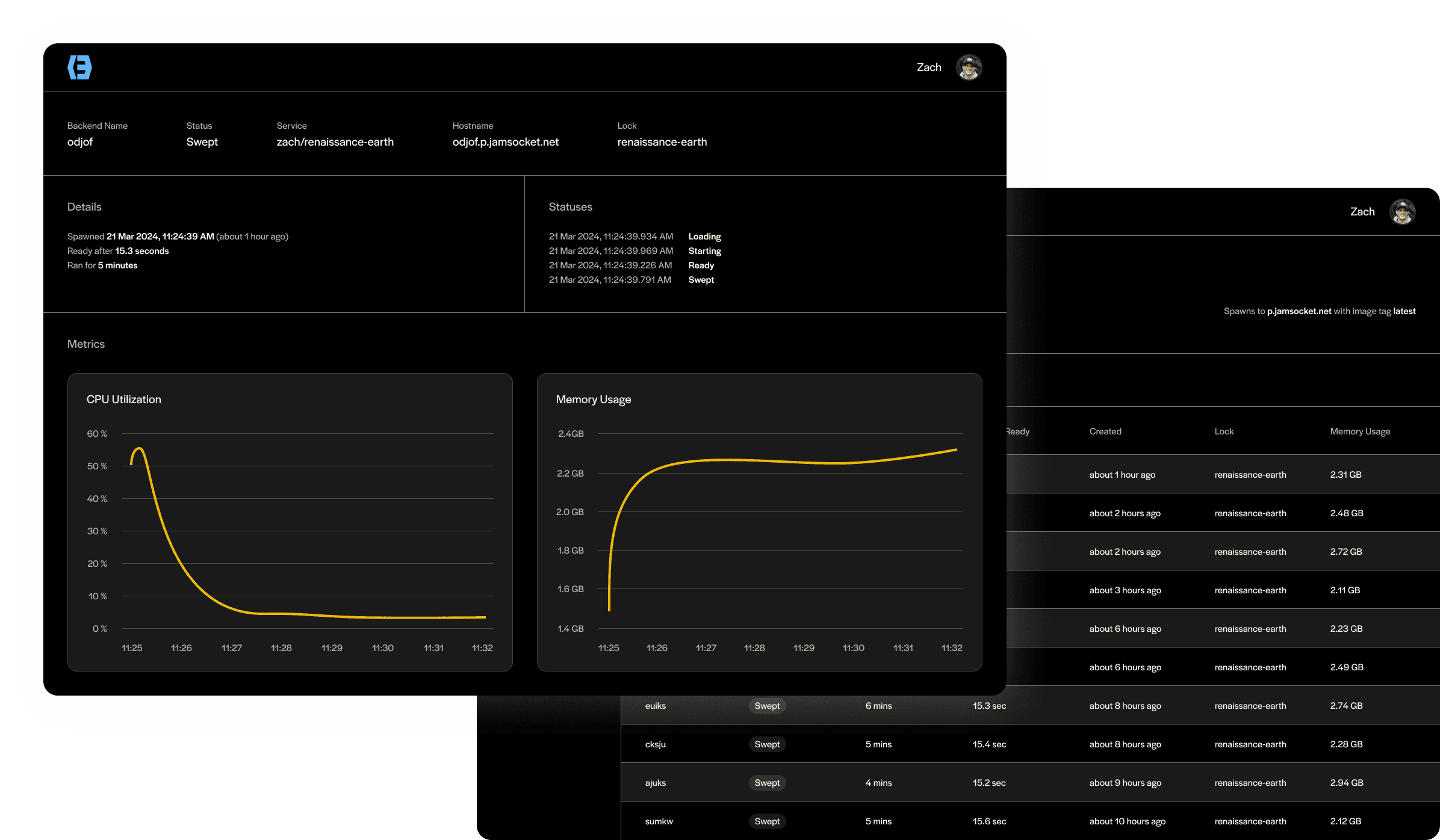Backends for
The platform for scaling sync engines, based on the infra behind Figma and Google Docs.
How it works
Run your sync engine.
1
Spawn a backend
When a user opens a document in your app, your app spins up a sync server on Jamsocket.
2
Connect clients
Clients connect directly to the sync server over WebSocket or HTTP.
3
Your code runs
Each sync server is an isolated Linux process, running code you provide in any language.
4
Automatic termination
Once every client of a sync server disconnects, we automatically suspend it until they reconnect.
Y-Sweet on Jamsocket
Y-Sweet, our Yjs sync engine
It's easier than ever to add realtime collaboration to your app with Y-Sweet on Jamsocket.
Batteries included
Get up and running in minutes with our serverless infrastructure.
- Featuring React and JS SDKs
- Authentication built in
- Bring your own compute options
The Yjs Ecosystem
Take advantage of the Yjs ecosystem when you use Y-Sweet.
- Yjs shared data types
- Bindings to text editors
- Offline support
Storage on your terms
Automatically persist documents when you link your own S3 storage.
- First-class support for AWS S3
- Cost-effective and scalable
- Own your data on your system
Case Studies
Jamsocket in Action
Jamsocket is the most powerful solution for realtime collaboration, AI agents, and data-intensive apps.
Rayon
Multiplayer Collaboration
Rayon uses Jamsocket as the realtime data backend for its CAD software.
When a user opens a document, Rayon spins up a Jamsocket backend, which serves as the source-of-truth for all clients connected to that document. The session backend is responsible for persisting changes to the database.
“We love using Jamsocket at Rayon. It just works!”
Bastien Dolla
Co-founder, Rayon
Op
Data Intensive Apps
Op lets users analyze data with Pandas within the browser.
When a user opens a sheet, Op spins up a Jamsocket backend to load the user’s dataset into memory. It then allows the user to answer questions about the dataset using plain language (by invoking an LLM) or directly in Python.
“I wanted the easiest way to set up a code execution backend for every user. Jamsocket had the simplest API.”
Samuel Quinn
Co-founder, Op
Athena Intelligence
AI Agents and Notebooks
Athena Intelligence uses Jamsocket to create coding environments for its AI agents and to sync documents between its agents and users.
When an agent needs to analyze some data, Athena spins up a Jamsocket backend as the agent’s coding environment.
“We’re happy users. It works, nothing breaks, that’s what matters.”
Brendon Geils
Founder and CEO, Athena Intelligence
Advanced concepts
Building blocks for modern apps
Jamsocket provides simple, powerful abstractions for locking and authorization.
Keys
Ensure that only one session backend is running per document at a time, as a single source of truth.
Tokens
Limit backend access to authorized people by gating that backend behind a tokenized URL.
Monitor your app
Observability built in
Retrieve application logs or view details like memory and CPU usage in your Jamsocket dashboard or CLI.
Sign up
Deployment options
Our cloud, or yours
Choose to deploy Jamsocket session backends on our managed cluster or on-prem using BYOC.
Fully Managed
We run everything for you. Spend your time building and let us handle the infrastructure.
See Pricing
BYOC
Run in your own AWS account or on-prem. We manage scheduling, DNS, certificates, and observability.
See Pricing









